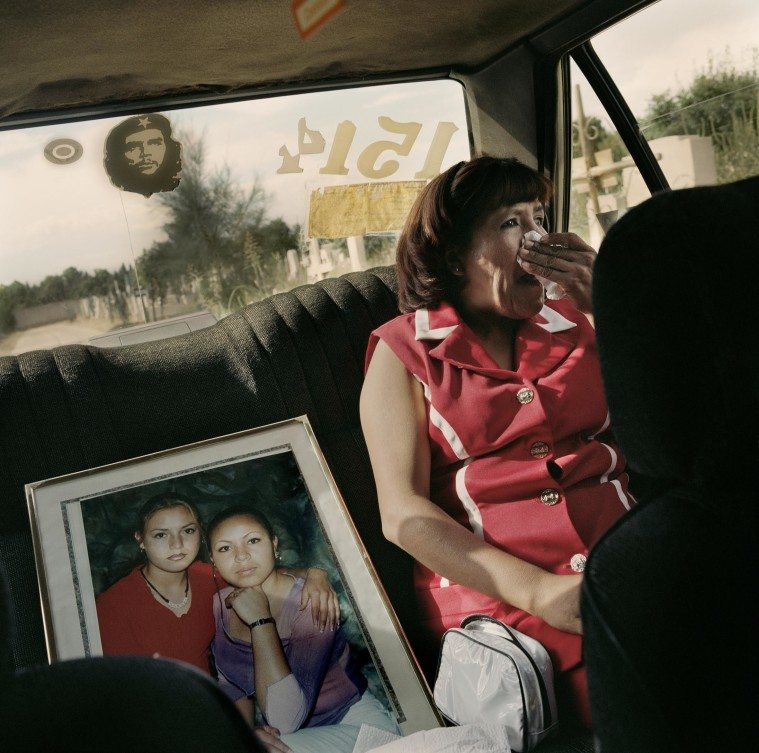
Femicide in Juárez is Not a Myth
A vocal group of American critics claims that Juarez is not a place of disproportionate violence against women. Here’s why they’re wrong.

Last year, the Texas Observer published an interview with Molly Molloy in which she argued that femicide in Juárez, Mexico is a myth. Molloy is a research librarian at New Mexico State University who has studied Juárez for two decades and runs the Frontera List, an influential forum for border and Mexico news. In the article, Molloy claims that femicide — or the killing of women for being women, often accompanied by rape or mutilation — is a sensationalized media narrative that distracts from real problems in Juárez.
I published a book on femicide in Juárez, and I often receive emails from critics who wield Molloy’s article as a weapon. They are generally people who do not believe that gender is worth studying in any context. Other researchers and activists have also talked to me about how the article is used by critics to invalidate their work. Paula Flores, whose daughter Sagrario was kidnapped and murdered in Juárez in 1998, is a well-known activist. When I talked to her about the piece, she said, “Those are words the government uses to clean up the image of dear Juárez. I personally did not invent that I had a daughter named Sagrario. Femicide is not a myth.”
In the Q&A, Molloy argues that “this idea that Juárez is a place of disproportionate violence against women is a misperception” in part because the murder rate for women is not unusually high compared to American cities. She also points out that more men are murdered than women. Nobody in the field of femicide research disputes the fact that more men are murdered. However, there is much to be gained by recording and studying the particular patterns of violence against women. In Juarez, that project was begun by a 60-year-old retired accountant.
In 1993, Esther Chávez Cano began to record the deaths of women in Juárez, Mexico. She had noticed a rise in a particular kind of violence. Mostly poor and dark-skinned women and girls were being raped, mutilated — sometimes their nipples were cut off — and then dumped, in public spaces, occasionally in groups. In a historic trial in Juárez in 2015, five members of a gang were collectively sentenced to 697 years behind bars for the murder of 11 women they dumped in a riverbed on the outskirts of Juárez.
That is what femicide looks like.
Go to Juárez today, and you will find a city marked with memorials and monuments, crosses, graffiti and messages left in memory of femicide victims.
“The reason it is important to preserve the label ‘femicide’ and not just ‘homicide’ is because there are qualitative differences in the ways in which violence is targeted and carried out,” wrote Roxanne Krystalli, the program manager for the Humanitarian Evidence Program at Feinstein International Center and a researcher on questions of gender and violence in armed conflicts, in an email.
It is a specific type of violence that relates very closely to messages about a woman’s sexuality, her ability to inhabit public space and her efforts to be treated as an equal in public roles.
“Femicide is about women being targeted for killing because they are women, or because they are women in particularly vulnerable situation or context, such as the maquiladora women were coming on and off the buses late at night,” argued Jean Friednam-Rudovsky, a journalist who reports on violence against women in Juárez and other areas.“Femicide is often, but not necessarily, about women first being violated sexually and then killed. These crimes are different than other crimes both in how they are committed as well as in the response given to them by government, law enforcement and civil society.”
Molloy also asserts that femicide is a myth because three-quarters of the cases have been resolved and some involved domestic violence.
First, the cases were resolved according to the Mexican government, which systematically employs torture to force confessions from people who often have nothing to do with the cases. More important, the fact that a femicide case is resolved or that it involves domestic violence does not make it a “myth.” There is a common misconception about rape that has spilled over into femicide — the idea that the perpetrator of the crime must be some random guy or insane serial killer. Statistically speaking, most violence against women is committed by someone they know. Femicide is no different.
In her article, Molloy also wrote that she has “a problem with this extreme focus on the women victims. I think every single one of the victims matter,” and on Frontera List she has used the hashtag #AllLivesMatter when discussing femicide. Given that the hashtag has traditionally been used to silence activists in the #BlackLivesMatter movement, it’s troubling to see her apply it to femicide. To conduct research about a particular type of violence does not mean that a researcher doesn’t care about “all lives.” It is like someone writing a biologist researching tree frogs to say that #AllAnimalsMatter.
“Certain types of violence against women (such as sexualized torture, paradigmatic displays of women’s naked bodies in public spaces after their deaths and others) are deliberately feminized in order to send messages to other women or to men associated with the female victims,” wrote Krystalli in an email. “These are often linked to threats to cease perceived activist or oppositional activities.”
It is true that the media, especially in Mexico, is “fetishizing” femicide, as Molloy describes it, but she fails to recognize that the coverage is part of a sexist media culture that victimizes a second time by sexualizing victims’ bodies, suggesting that they were prostitutes, describing their underwear, their fingernail polish, or the fact that they were walking alone at night. Molloy blames researchers, when her critique should be applied to the media.
For journalist Friedman-Rudovsky the term “femicide” is an important tool in working toward equality and justice for women. “‘Femicide’ is now a commonly accepted English word that enables conversation across cultures. This is, of course, sad,” she wrote in an email. “But the fact that there is a term — and an accompanying body of scholarly and journalistic work behind that word — to talk about this stuff is a boon in the fight for women’s equality and justice worldwide. We have Juárez women activists to thank for that.”
Statistically speaking, most violence against women is committed by someone they know. Femicide is no different.
Molloy is not alone in her views.
In This Love is Not for Cowards: Salvation and Soccer in Ciudad Juárez, author Robert Andrew Powell wrote, “The longer I’ve lived in Juarez, the more I feel that the city’s problems have little to do with gender.”
While Molloy, Powell and other critics may not consider femicide to be real or important compared to their preferred research on drug violence and global capitalism, that does not make femicide a “myth,” nor does it make it irrelevant. “The problems of Juárez, specifically the murders, have strongly to do with a gender system that has constructed and consolidated a kind of masculinity that is lethal for society,” said Héctor Domínguez-Ruvulcaba, an expert on gender violence at the U.S.-Mexico border and a professor at the University of Texas at Austin.
Go to Juárez today, and you will find a city marked with memorials and monuments, crosses, graffiti and messages left in memory of femicide victims. You will find mothers and daughters of victims working to end femicide, or to at least improve a judicial system that passes judgment on “bad” mothers and victims who were “prostitutes,” rather than investigating violence against women.
Go to Juárez, and you will find Paula Flores, who 17 years after the murder of her daughter Sagrario, continues to fight for justice.
Correction: The initial version of this story stated that Robert Andrew Powell wrote that he feels Juarez’s problems have “nothing” to do with gender. The line from his book reads, instead, that Powell feels Juarez’s problems have “little” to do with gender. The article has been changed to correct the error.


